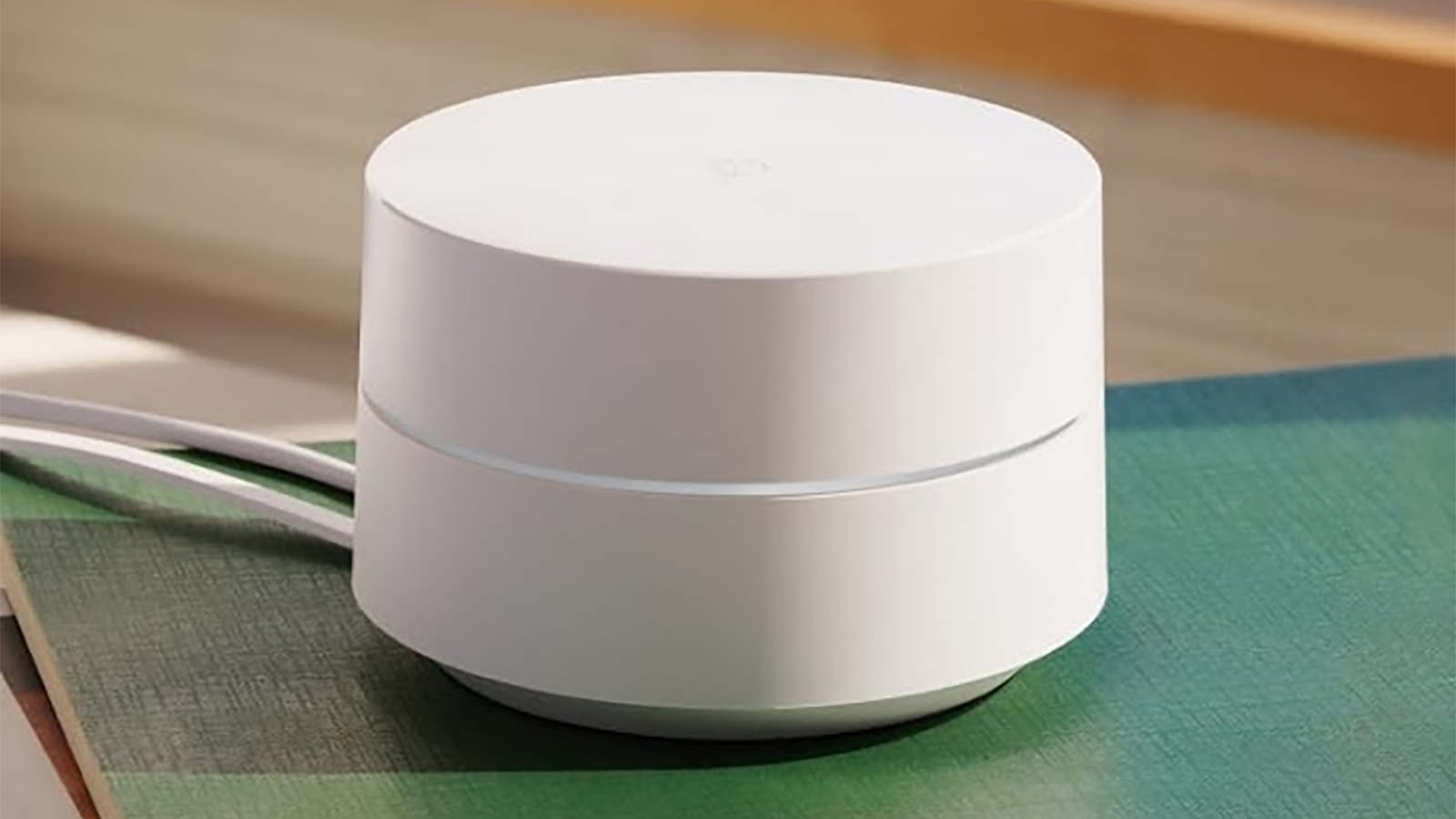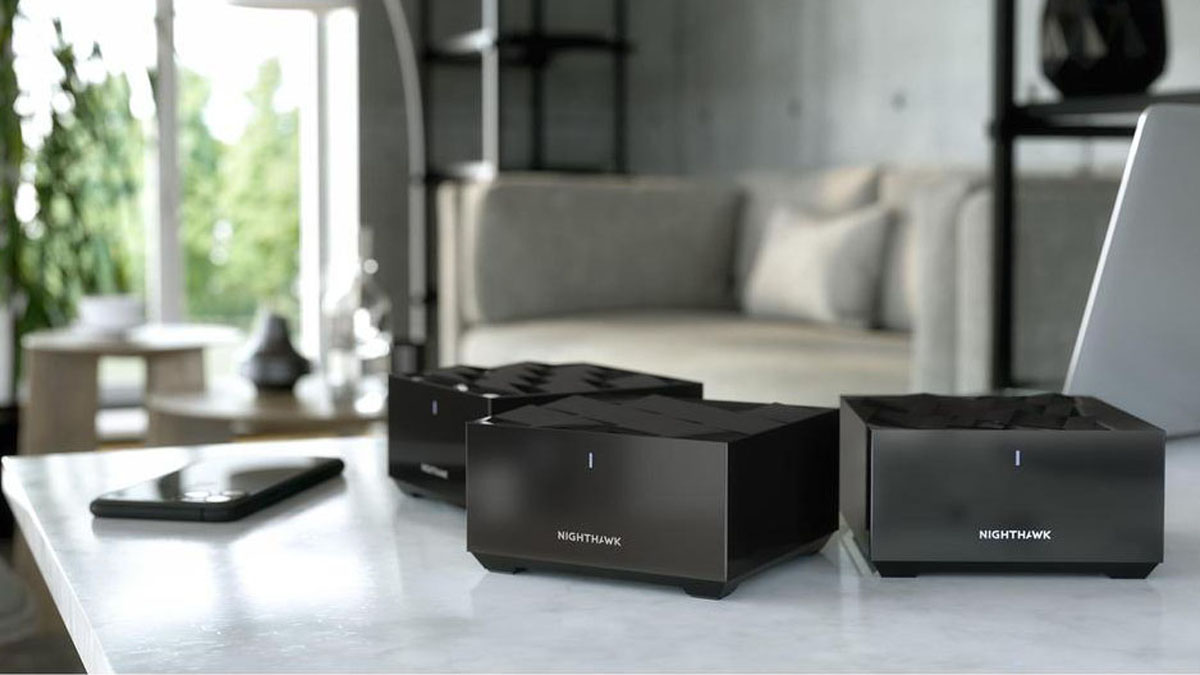Should you buy a mesh Wi-Fi system?
Who needs one, what is mesh Wi-Fi good for – and are there any pitfalls?

Deciding between a mesh Wi-Fi system and a more traditional router setup can be tricky if you’re not familiar with the differences. Though mesh technology has been around for a bit, it’s still relatively new to most people. So, deciding on whether to make the upgrade requires a bit of research.
That said, mesh Wi-Fi has started becoming more mainstream, with some manufacturers, most notably Google, focusing specifically on mesh systems. And, since these router systems are on the cutting edge, you’ll see them integrate the newest tech like Wi-Fi 6 support as well as smart home features. The Google Nest Wifi, for instance, actually comes with built-in smart speakers.
But, mesh systems work a bit differently than typical routers. And, if you’re new to them, you probably have plenty of questions on how they work, what the differences are, and which one might be the better network solution for your home or office. After all, a case can be made for either depending on the situation.
To help you figure out whether you should buy a mesh Wi-Fi system, we’ll dive into mesh routers and compare them with traditional ones to help you figure out what’s best for your network.

What is mesh Wi-Fi and how does it work?
Mesh Wi-Fi offers a way to throw a blanket of wireless coverage over your home (or office) by using multiple devices which are hooked up to each other seamlessly – something that even the best routers cannot usually do.
A mesh Wi-Fi system will have one device that acts as the central unit, and is connected to your DSL or cable modem, with it acting like a standard router. The other units are then satellites which are wirelessly hooked up to the central unit, but provide their own Wi-Fi signal, therefore strengthening coverage in the different parts of the house where they’re positioned. When linked up as such, all these units form a ‘mesh network’ (which is all the same network).
You’ll need to buy a mesh Wi-Fi package with enough units to cover the entire area of your house, and manufacturers provide square footage guidelines to let you know how many devices will be necessary.
Get daily insight, inspiration and deals in your inbox
Sign up for breaking news, reviews, opinion, top tech deals, and more.

Why would you want a mesh Wi-Fi system?
As we’ve just discussed, the point of mesh Wi-Fi is to extend the coverage of your wireless network around the house. Therefore, it won’t make much sense – well, any sense – to invest in mesh networking technology if you have a small house (or apartment) throughout which the Wi-Fi coverage is good in every room when using a run-of-the-mill router.
The main use case for a mesh Wi-Fi system is in larger houses, which might have so-called wireless ‘dead spots’, or rooms where the Wi-Fi coverage drops off so you get nothing at all (or an intermittently barely usable signal). With mesh Wi-Fi, you can have the central router unit in the lounge (or wherever you prefer), and then place the satellites to extend coverage to those other rooms which get no Wi-Fi signal otherwise, allowing other users to connect around the house, and helping to provide better coverage and support the use of more devices on your home network.
Another point to bear in mind is that mesh Wi-Fi is generally pretty novice-friendly, as these systems are invariably easy to set up via a simple smartphone app. User-friendliness never hurts, of course, though some standard routers (or indeed traditional Wi-Fi extenders) can also be easy enough to get going with, too. The aforementioned apps usually make it a snap to manage your mesh Wi-Fi network after it’s gone live, too.
For those with a larger home, then, mesh Wi-Fi could be of huge benefit. Even with a more middling-sized property, there could be an argument for a mesh Wi-Fi system if the wireless signal isn’t that great on the fringes of your house. There may be rooms where speeds aren’t that good – even if they remain usable – and the need to cure those issues will depend on your own tolerance for any potential slight slowdown, and how much time you spend in those areas. In such borderline cases, it’ll be a matter of balancing the benefits against the outlay for a mesh Wi-Fi system.

Why might you pass on mesh Wi-Fi?
Speaking of the outlay to get up and running with mesh networking, one of the main cons here is the cost. As you might guess, given that it involves multiple devices, the typical pack of two or three units that a mesh Wi-Fi system comprises of doesn’t come cheap, generally speaking.
That said, pricing isn’t exactly out-of-line when compared to high-end routers – which is effectively what a mesh Wi-Fi product is, when you think about it, offering high-quality Wi-Fi coverage for a premium – and asking prices have come down over time somewhat. It’s also worth bearing in mind that we’ve noticed when it comes to Black Friday or Prime Day and the like, mesh networking technology often gets some sizeable price cuts, making it a considerably more tempting proposition. If one of those big sales events is near, it could well be worth holding your horses a bit longer before making a purchase.
Avid gamers may also shy away from a mesh Wi-Fi system, as the core router provided is never going to be able to match the sheer oomph of one of the best gaming routers, or give you gaming-related features and things like traffic prioritization (or functions like the ability to connect to the fastest game server). Premium routers will generally give you more fine-grained and in-depth controls than a mesh Wi-Fi product, too.
Another potential negative is that not everyone is happy about having pieces of hardware visible about the house. These folks may feel that it’s bad enough having to locate one router somewhere, without having to place a few different devices dotted about the home. On the flipside, the good news is that most mesh Wi-Fi hardware is designed to be nicely compact and generally blend in with home décor – and these units are nothing like the kind of antenna-bristling beasts that you’ll see with some standard router designs.
In short, the design of these units can actually be a pro rather than con, particularly if you want a smart speaker too, because as we mentioned at the outset, Google’s Nest Wifi offers a space-saving 2-in-1 combination of mesh router plus speaker.

Should you buy a mesh Wi-Fi system?
Obviously enough, the answer to this question depends on your own personal needs and situation. As we’ve already covered, a mesh Wi-Fi system is primarily aimed at those with a larger house, and it makes no sense for somebody living in a small property which is easily blanketed in Wi-Fi coverage by a normal router anyway.
We’ve covered the most common drawbacks, and aside from hardcore gamers – who’ll likely want a dedicated gaming router with all the associated bells and whistles – the main bone of contention is the cost of a mesh Wi-Fi product. You may be able to sidestep that by finding products on sale during the likes of Black Friday week, but if the asking prices for mesh networking simply look too rich for your blood, then you might be better off considering a traditional Wi-Fi extender (which isn’t nearly as seamless a solution, but could still work as a more palatably wallet-friendly proposition).
Many folks with a larger house will, however, easily get their money’s worth from a mesh Wi-Fi setup, particularly families with kids, the parents of which can put paid to whinges on the topic of connection speeds in upstairs bedrooms, for example. As well as guaranteeing strong wireless coverage throughout the house, mesh Wi-Fi systems work seamlessly, are simple to setup and manage, plus they’re easy to expand by tacking on a further device if needed.
- Best mesh Wi-Fi routers: top routers for large homes
You might also want to check out the Asus ZenWiFi AX (XT8) review
Darren is a freelancer writing news and features for TechRadar (and occasionally T3) across a broad range of computing topics including CPUs, GPUs, various other hardware, VPNs, antivirus and more. He has written about tech for the best part of three decades, and writes books in his spare time (his debut novel - 'I Know What You Did Last Supper' - was published by Hachette UK in 2013).